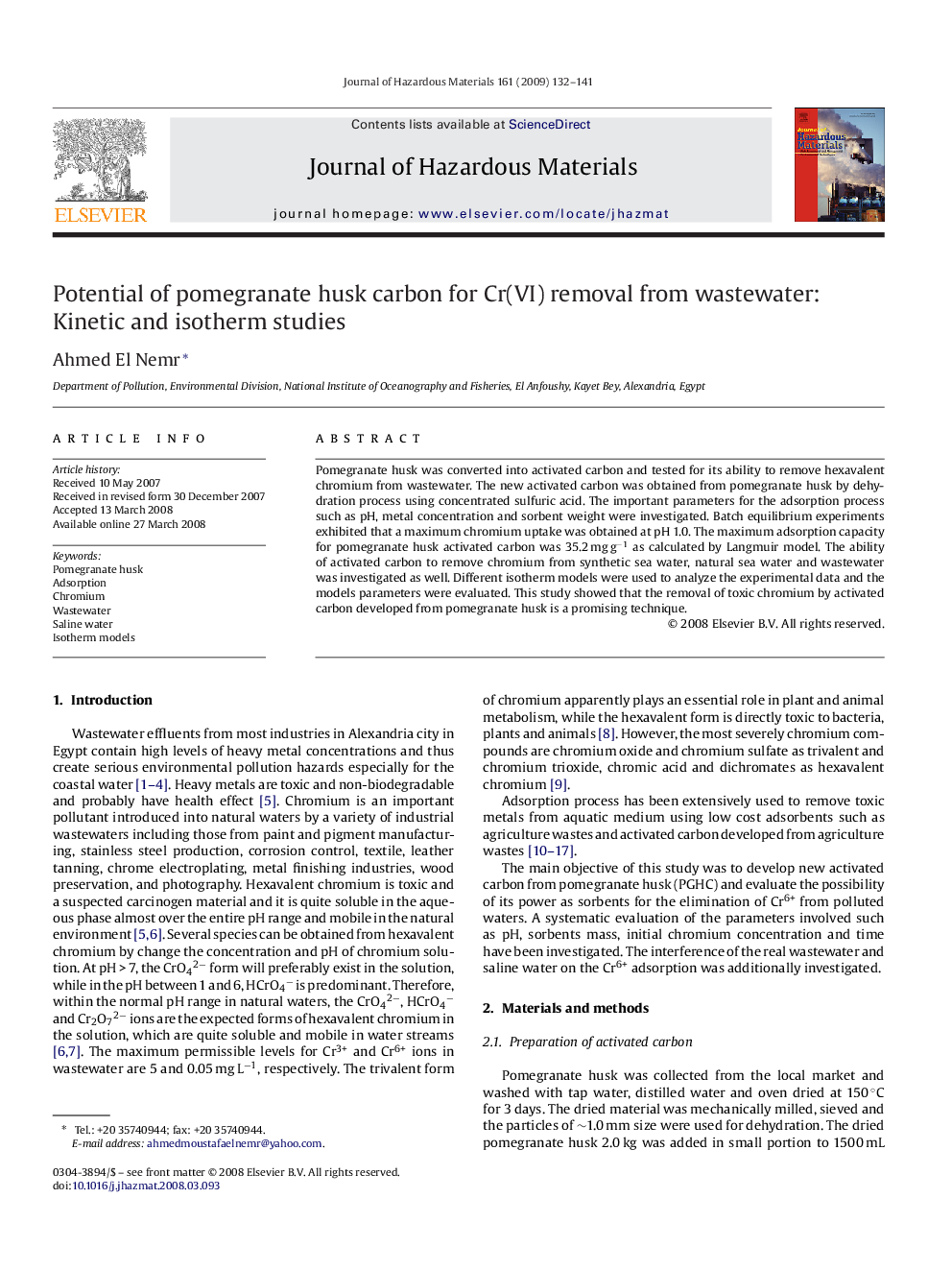| Article ID | Journal | Published Year | Pages | File Type |
|---|---|---|---|---|
| 581473 | Journal of Hazardous Materials | 2009 | 10 Pages |
Abstract
Pomegranate husk was converted into activated carbon and tested for its ability to remove hexavalent chromium from wastewater. The new activated carbon was obtained from pomegranate husk by dehydration process using concentrated sulfuric acid. The important parameters for the adsorption process such as pH, metal concentration and sorbent weight were investigated. Batch equilibrium experiments exhibited that a maximum chromium uptake was obtained at pH 1.0. The maximum adsorption capacity for pomegranate husk activated carbon was 35.2 mg gâ1 as calculated by Langmuir model. The ability of activated carbon to remove chromium from synthetic sea water, natural sea water and wastewater was investigated as well. Different isotherm models were used to analyze the experimental data and the models parameters were evaluated. This study showed that the removal of toxic chromium by activated carbon developed from pomegranate husk is a promising technique.
Related Topics
Physical Sciences and Engineering
Chemical Engineering
Chemical Health and Safety
Authors
Ahmed El Nemr,
